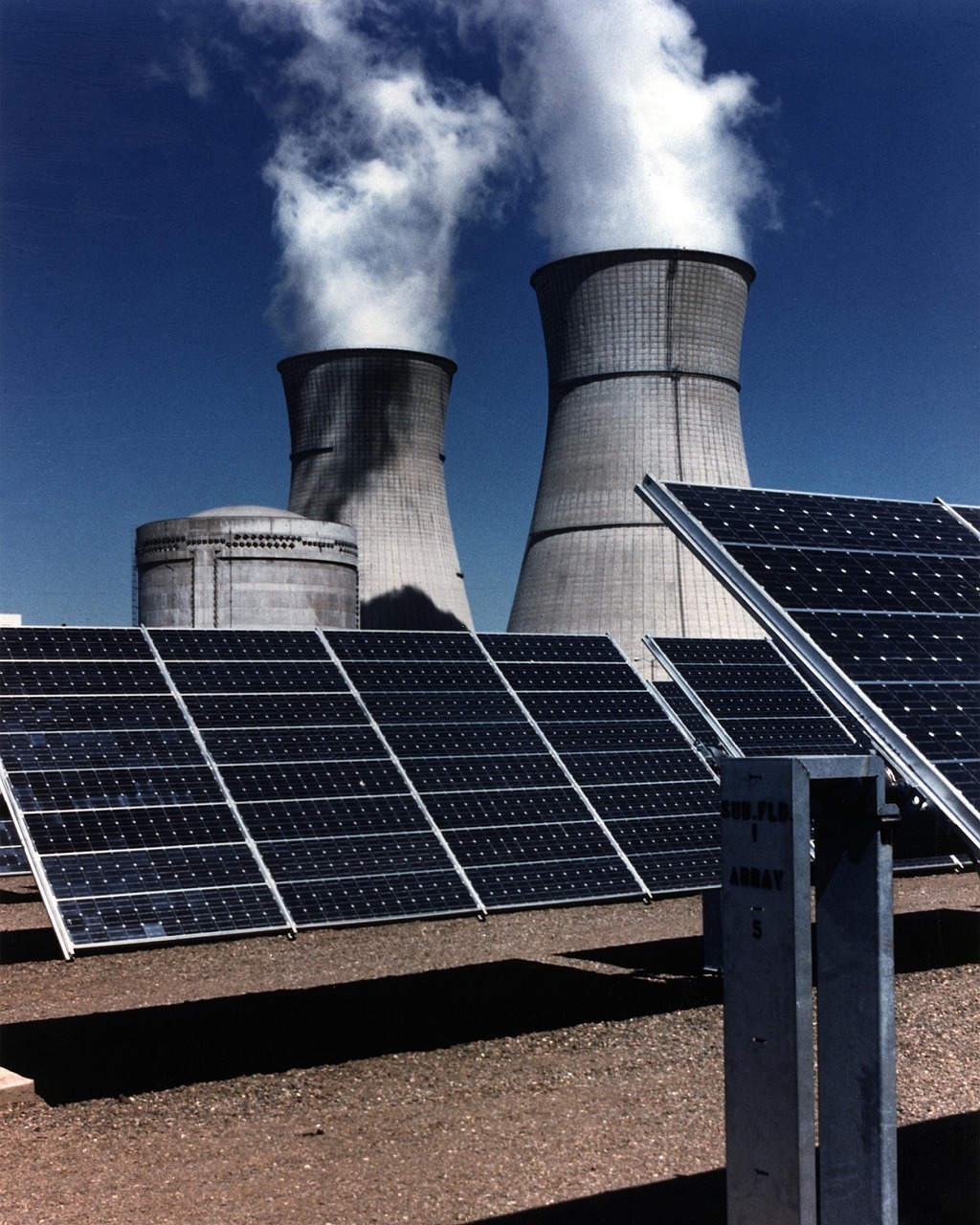How can renewable energy technologies support the nuclear power industry?
- Get link
- X
- Other Apps

Compared to fossil fuel-based energy systems, nuclear, solar and wind provide much cleaner sources of energy. However, they all come with their own weakness. Both solar and wind energy need stable weather conditions for power generation. Conversely, nuclear power cannot be ramped up or down quickly to meet energy demands. It also generates radioactive waste. However, by coupling nuclear power with renewable energy, we can utilize the best from all three sources.
Components of a hybrid nuclear-renewable energy system:
These proposed systems typically have a number of components in common:
Nuclear reactors: Preferably small, modular reactors (<300MWe). Larger, high-temperature reactor systems may be more suitable for hybrid systems. Studies at Idaho National Labs are testing the feasibility of light water reactor systems.
Steam generator: To produce electricity from the nuclear reactor.
Renewable energy generator: Typically wind turbines, solar panels, or occasionally both. Other forms of renewable energy can also be used.
Storage: Often in the form of molten salts or firebricks, or other methods for capturing excess energy until it is released to the grid.
Industrial generators: Optional components that produce high-value products from the renewable or nuclear process. Products can include gasoline, hydrogen or water.
Hybrid solar-nuclear power plants:
Several designs have been proposed for the synthesis of nuclear and solar power plants. The nuclear reactors will generate steam at 3000C, while the solar thermal panels superheat salts to a molten state. These molten salts have excellent heat retention. The combination of continual nuclear power with solar energy stored in the salts allows the reactor to generate superheated steam to run electricity even at night.
Studies predict solar-nuclear hybrid power plants to be far more efficient in power generation compared to nuclear or solar power plants alone. Along with a substantial increase in the solar heat to electricity conversion, the plants appear to have greater profitability.
Hybrid wind-nuclear power plants:
Physics-based modeling recently assessed the technical ease of combining nuclear power with a wind farm operating in Wyoming. The studies confirm the ability to resolve the variability of power generation by wind turbines. Additional studies are needed to assess the best nuclear reactor designs to use with wind turbines.
Hybrid geothermal and nuclear power plants:
Models have been proposed to pair a nuclear reactor with geothermal energy.
The basic design of power generation includes:
Geothermal system with an injection shaft to inject fluid into hot dry rock (HDR) zone (e.g., a 3000 to 4000 m deep shaft), and an extraction shaft. Extraction shafts allow extraction of fluid as high-pressure steam to generate power.
Nuclear reactor is positioned within the HDR region to supplement heat into the zone.
Not only is this strategy innovative, it is safe and efficient for a variety of reasons. Due to the underground nature of the nuclear reactor, the nuclear bore housing is sealed, which provides for built-in radioactive waste disposal. Further, the nuclear heating compensates for the thermal depletion typically seen in a traditional geothermal system, leading to an extended lifespan and increased profitability.
Converting nuclear waste to electricity:
While not a hybrid system per se, another new technology turns nuclear waste itself into a long-lasting energy source. This exciting technology has been developed by a team of scientists at the University of Bristol. It converts massive amounts of nuclear waste into an electricity source. The technology involves encapsulating radioactive waste within artificial diamonds. The “battery” will supply an electrical current when placed in a circuit.
As a prototype, scientists have used nickel-63 as the radiation source to form this “diamond battery”. This technology holds great promise, since graphite rods within nuclear reactors generate a lot of carbon-14 nuclear waste on their surfaces. Like nickel-63, carbon-14 emits short-range radiation, which can be quickly absorbed by any solid material. Encapsulation of carbon-14 in diamond, the hardest naturally occurring material on Earth, ensures safe containment of the radiation.
Further, the lifetime of these diamond batteries far exceeds conventional batteries. Carbon-14 batteries will take about 5730 years to lose half of their power. Eventually, these batteries could replace traditional chemistries, particularly in situations where a very long-life battery is desired, such as pacemakers, satellites, high-altitude drones or even spacecraft. For now, though, the batteries are only a prototype.
Going forward:
Hybrid nuclear-renewable energy may play a key role in reducing greenhouse gas pollution, along with increasing the efficiency and reliability of the energy supply. While more prototyping needs to occur for these systems to prove their performance, they, like diamond batteries, hint at the future of our power supply.
- Get link
- X
- Other Apps


Comments
Post a Comment